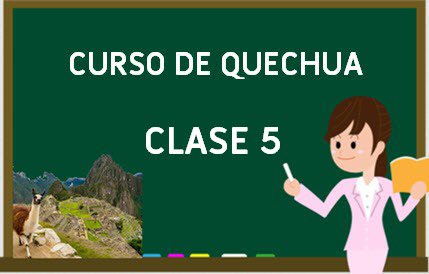Insights into Quechua Culture
Historical Context
The roots of Quechua culture extend back to the Inca Empire, which flourished in the Andean region from the 15th to the 16th centuries. The Incas utilized the Quechua language, which later became the lingua franca of their vast empire. Today, millions continue to speak Quechua, and it holds the status of an official language in several South American nations.
Social Organization
Quechua society is traditionally structured around communal living, where strong family bonds and shared responsibilities are paramount. The community plays an essential role in the lives of individuals, fostering a deep sense of belonging and support. Social events, festivals, and ceremonies are crucial for nurturing these connections.
The Essence of “Wayqear”
Definition and Importance
The term “wayqear” in Quechua translates to “to nurture” or “to care for.” This concept is deeply woven into Quechua culture, highlighting the significance of relationships, mutual support, and collective well-being. Wayqear transcends individual families, encompassing entire communities and reflecting the interconnectedness of people with their environments.
Cultural Expressions of Wayqear
Wayqear manifests through various cultural practices, such as:
- Reciprocity: The principle of “ayni” is fundamental in Quechua culture. It emphasizes mutual aid, where individuals and families support one another during times of need. This can include assistance with agricultural work, childcare, or community projects.
- Festivals: Celebrations and rituals play a vital role in strengthening community bonds. Events like Inti Raymi (Festival of the Sun) and other local festivities gather people, promoting unity and shared identity.
- Traditional Wisdom: The transmission of knowledge regarding agriculture, herbal medicine, and crafts is a vital aspect of wayqear. Elders within the community often serve as mentors, instructing younger generations in sustainable practices and cultural heritage.
Pegar: Forming Bonds Among Quechua Communities
Understanding Pegar
“Pegar” translates to “to stick” or “to bond.” In the context of Quechua communities, it signifies the social connections established between individuals, families, and groups. These bonds are crucial for preserving the fabric of Quechua society and ensuring collective well-being.
Forms of Bonding
- Family Connections: The family unit stands as the cornerstone of Quechua society. Extended families frequently reside together, sharing resources and responsibilities. Family gatherings are commonplace, reinforcing relationships and providing support.
- Community Events: Social activities such as communal meals, agricultural fairs, and religious ceremonies create opportunities for people to unite. These gatherings enhance a sense of belonging and reinforce social ties.
- Collaborative Initiatives: Numerous Quechua communities engage in collective projects, such as infrastructure development or local market organization. These cooperative efforts strengthen relationships and cultivate a shared sense of purpose.
The Importance of Language
Language is an essential tool for forging bonds within Quechua communities. The Quechua language itself promotes connection, as it is frequently employed in social interactions, storytelling, and rituals. Utilizing Quechua fosters cultural identity and solidarity among its speakers.
Globalization and Its Effects
Cultural Conservation
Globalization influences numerous aspects of life, presenting both challenges and opportunities for Quechua communities. While globalization can threaten traditional practices and languages, it also creates pathways for cultural preservation and revitalization. Many communities actively engage in promoting their culture through tourism and cultural exchanges, showcasing their traditions and language to a wider audience.
Language Evolution
The effects of globalization have led to changes in language use among younger generations. A growing number of Quechua speakers are learning Spanish or other dominant languages to access economic opportunities. This shift can contribute to a decline in the use of Quechua, threatening the preservation of cultural identity.
Resilience and Adaptation
In spite of these challenges, Quechua communities have shown remarkable resilience. Many are taking proactive measures to revitalize their language and cultural practices through educational programs, community initiatives, and partnerships with organizations dedicated to indigenous rights.
Examples of Quechua Communities
The Cuzco Region
The Cuzco area, once the capital of the Inca Empire, remains home to numerous Quechua speakers today. In recent years, there has been a resurgence of interest in traditional practices, with community members organizing festivals that celebrate their heritage. Initiatives to teach Quechua in schools have gained momentum, empowering younger generations to embrace their linguistic roots.
The Sacred Valley
In the Sacred Valley, Quechua communities are harnessing tourism to promote their culture while reaping economic benefits. Local artisans create traditional crafts, and community-led tours provide visitors with insights into their lifestyles. This approach fosters cultural exchange while aiding in the sustenance of traditional practices.
The Future of Wayqear Pegar Entre Varios Quechua
Community Initiatives
Many Quechua communities are undertaking initiatives to reinforce their cultural identity and social bonds. These efforts include:
- Cultural Workshops: Workshops focused on traditional crafts, agricultural methods, and storytelling are being organized to engage younger generations and ensure the continuation of cultural practices.
- Language Revitalization Programs: Efforts to teach Quechua in schools and community centers are underway, fostering pride in their linguistic heritage.
- Collaborative Research Initiatives: Partnerships with universities and organizations facilitate research on Quechua culture and language, promoting awareness and understanding among a broader audience.
The Influence of Technology
Technology plays a vital role in preserving Quechua culture. Social media platforms enable communities to share their stories, traditions, and languages with a global audience. Moreover, online resources and educational platforms support language learning and cultural exchange.
Closing Thoughts
“Wayqear pegar entre varios quechua” embodies the essence of Quechua culture, highlighting the significance of nurturing relationships and social bonds within communities. As globalization presents both challenges and opportunities, the Quechua people continue to showcase resilience and adaptability in preserving their cultural identity. Through initiatives focused on language revitalization, cultural preservation, and community engagement, the Quechua people are ensuring that their rich heritage endures for future generations. By embracing their traditions while navigating the complexities of modern life, Quechua communities serve as a testament to the strength of cultural identity and the power of human connection.


